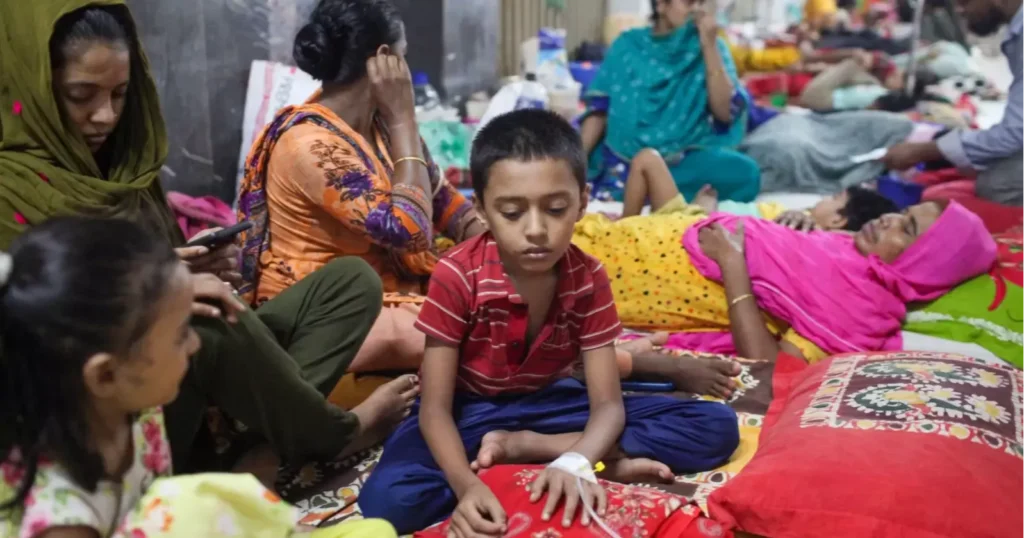Introduction
Dengue fever continues to be a major public health concern in many tropical and subtropical regions around the world. The recent report of two additional fatalities and 204 new hospitalizations within just 24 hours has raised alarm bells among health authorities. As the incidence of this mosquito-borne viral infection escalates, understanding the dynamics of dengue transmission, its symptoms, treatment options, and preventive measures becomes crucial for communities at risk.
Table of Contents
Overview of Dengue Fever
Dengue fever is caused by the dengue virus, which is transmitted primarily through the bite of infected Aedes mosquitoes, particularly Aedes aegypti and Aedes albopictus. The virus exists in four serotypes, and infection with one serotype provides lifelong immunity against that specific type but not against others. This means that individuals can potentially suffer from dengue multiple times throughout their lives.

Symptoms
- High fever
- Severe headaches
- Pain behind the eyes
- Joint and muscle pain
- Rash
- Mild bleeding (such as nosebleeds or gum bleeding)
Recent Developments
The recent surge in dengue cases has put a strain on healthcare systems in affected areas. Reports indicate that in a single day, two individuals lost their lives to the disease, and 204 new patients were hospitalized. This spike highlights not only the virulence of the current outbreak but also the urgency needed in public health responses.
Analysis of Recent Fatalities
The two recent deaths raise critical questions about the underlying causes, such as:
- Severity of Cases: It is essential to understand whether the deceased were suffering from underlying health conditions that may have exacerbated their dengue symptoms.
- Access to Healthcare: Delays in seeking treatment can significantly impact patient outcomes. Understanding the accessibility and quality of healthcare services available during outbreaks is crucial.
- Public Awareness: Increased public awareness about the symptoms of dengue and the importance of seeking prompt medical care can be vital in reducing mortality rates.
Hospitalization Statistics
The hospitalization of 204 patients in a single day is alarming. This increase may be attributed to:
- Increased Mosquito Breeding: Favorable environmental conditions, such as stagnant water and warm temperatures, can lead to a rise in mosquito populations.
- Transmission Cycles: Dengue typically sees cycles of outbreaks, and the recent uptick could indicate the beginning of a new cycle.
- Public Health Interventions: The effectiveness of current public health measures in controlling mosquito populations and educating communities plays a crucial role in managing dengue outbreaks.
Prevention and Control Measures
Preventing dengue fever requires a multi-faceted approach involving government action, community engagement, and individual responsibility.
Government Initiatives
- Vector Control: Authorities must ramp up efforts to control mosquito populations through methods such as insecticide spraying, elimination of stagnant water, and community clean-up drives.
- Public Awareness Campaigns: Educating the public on how dengue is transmitted and the importance of protective measures can significantly reduce the number of cases.
- Surveillance: Increased surveillance of dengue cases allows for early detection and intervention. This includes monitoring mosquito populations and identifying potential outbreak areas.
Community Engagement

- Community Clean-Up Drives: Local communities should be encouraged to participate in clean-up drives to eliminate potential mosquito breeding sites.
- Educational Workshops: Workshops can be organized to inform people about dengue symptoms, prevention strategies, and when to seek medical care.
- Collaboration with Local Leaders: Engaging local leaders and influencers can help disseminate information effectively and encourage community participation in preventive measures.
Individual Responsibility
- Personal Protection: Individuals can take measures such as using insect repellent, wearing long-sleeved clothing, and using mosquito nets to reduce the risk of bites.
- Home Prevention: Ensuring that homes are free of stagnant water—by cleaning gutters, emptying containers, and covering water storage—can significantly reduce mosquito breeding.
- Awareness of Symptoms: Understanding the symptoms of dengue and seeking prompt medical attention can be lifesaving. Individuals should be encouraged to report symptoms early.
Treatment Options
- Hydration: Maintaining hydration is critical, especially in cases of high fever or vomiting.
- Pain Relief: Acetaminophen (paracetamol) can be used to relieve pain and reduce fever. However, medications such as aspirin and non-steroidal anti-inflammatory drugs (NSAIDs) should be avoided due to the risk of bleeding.
- Monitoring: Patients with severe symptoms should be closely monitored for signs of bleeding, organ impairment, or shock.
Conclusion
The recent spike in dengue cases, with two fatalities and over 200 hospitalizations in just one day, underscores the urgent need for comprehensive public health responses. As communities and health authorities grapple with this outbreak, a coordinated approach that emphasizes prevention, education, and effective healthcare access is paramount. The goal is not only to reduce the current burden of disease but also to foster resilience against future outbreaks.
As we move forward, ongoing research and development of vaccines and therapeutics will play a crucial role in controlling dengue fever and mitigating its impact on vulnerable populations. It is essential for all stakeholders—governments, healthcare providers, and individuals—to work together to combat this pressing public health threat.








